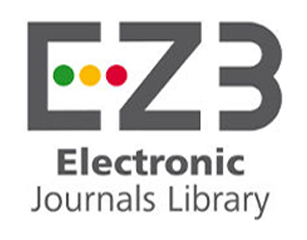STATE STRATEGY FOR RECRUITMENT OF FOREIGN STUDENTS IN THE SYSTEM OF HIGHER EDUCATION
DOI:
https://doi.org/10.32689/2617-2224-2022-3(31)-1Keywords:
state recruitment strategy, foreign students, higher education systemAbstract
In order to increase the volume of exports of higher education and to solve the main strategic tasks and tasks of internationalization of higher education institutions and its more active inclusion in the world educational space, as well as to regulate the interaction of various structures in the recruitment of foreign students, it is proposed to develop a state strategy for the recruitment of foreign students in combination with the strategy internationalization and communication strategy of higher education. The specified strategy should be developed taking into account all forms of internationalization of all forms of education (basic educational programs, inclusive education, programs of additional education) and levels of education. It is possible to make adjustments to it in accordance with the results obtained, trends in the development of the world market of higher education and the world labor market, changes in the regulatory and legal acts of Ukraine, the political and economic sphere and strategic goals, as well as changes in the portfolio of educational programs and products and the approved budget. The main tasks that must be solved in higher education institutions with the help of an internationalization strategy are defined, namely: expansion of the portfolio of educational programs at the expense of master's programs in foreign languages; interdisciplinary programs; summer and winter schools to attract foreign students; online training programs (in English and Ukrainian); development of credit interdisciplinary modules, which are implemented during the semester to increase the number of students in inclusive education programs; creation of an intercultural environment favorable for the personal development of each student; development of the mentoring institute; improvement of intercultural skills through a system of trainings on managing diversification in the audience; retention of the best graduates of the preparatory department, bachelor's degree, master's degree in higher education institutions for further study in the educational programs of the following degrees; increasing the motivation of managers and employees of structural subdivisions of higher educational institutions; improvement of the culture of reception of foreign students; development of the international education support fund; creation of a positive modern image of higher education institutions; creation of a comfortable and favorable environment in the institution of higher education; revision of agency agreements in order to establish more favorable conditions for the university; creation of a permanent team for the promotion of higher educational institutions. The purpose of the article. The purpose of the research conducted in the presented article is to determine the role and place of higher education institutions in increasing the volume of exports of higher education. Methodology. The methodology of the article is built on the basis of a comprehensive study of the developments of foreign scientists who made a significant contribution to the development of the theory of the educational process: R. Becker, Z. U. Brown, J. Hans, I. Garcia-Maynar, S. Castanetti, S. King, J. Mintzer, R. Patrinos, R. Psacharopoulos, J. Sessions, R. Soldatos, R. Stoneksh, E. Tan, J. Haywood, B. Chiswick. When studying the impact of higher education on economic growth, innovation and patent activity of the economy, the results of research by such authors as P. Aguillon, H. Budinger, R. Barro, Z. Grihiles, E. Denison, R. Dur, and D. Yogerson were used. Scientific novelty. A strategy for the recruitment of foreign students has been developed, which, together with the strategy of internationalization and the communication strategy of higher education, takes into account all forms of education (basic educational programs, integrated education, programs of additional education) and levels of education, trends in the development of the global market of higher education and the global labor market, changes in normative legal acts of Ukraine, political and economic sphere. Conclusions. The strategy should involve interaction with the following target audience: international entrants and their parents; graduates of institution of higher education and foreign universities; graduates of the preparatory department; recruiting agencies; support centers for compatriots abroad; embassies; Ukrainian-language schools; universities; employers; other foreign associations and organizations related to educational activities. As a result, measures within the framework of the proposed strategy should contribute to the development of the following main components of university culture: bringing higher education institutions to world leaders; increasing the number of international research projects; increasing the openness of education for foreign students; involvement of leading teachers in educational activities; creation and development of infrastructure.
References
Петрова Я. Ю., Завербний А.С. Проблеми та перспективні шляхи нарощування обсягів експортування наукомістких послуг Україною в умовах Євроінтегрування. Фондовий ринок України: перспективи розвитку і світовий досвід державного регулювання. 2021. № 2 (6). С. 231-239.
Левченко О.М., Плинокос Д.Д. Експорт освітніх послуг вищими навчальними закладами україни у вимірі глобалізаційних процесів. Економіка: реалії часу. 2015. № 4 (20). С. 210-216.
Проект Стратегії маркетингу послуг з вищої освіти на міжнародному освітньому ринку на період до 2025 року. Київ: МОНУ, 2021. 49 с.











